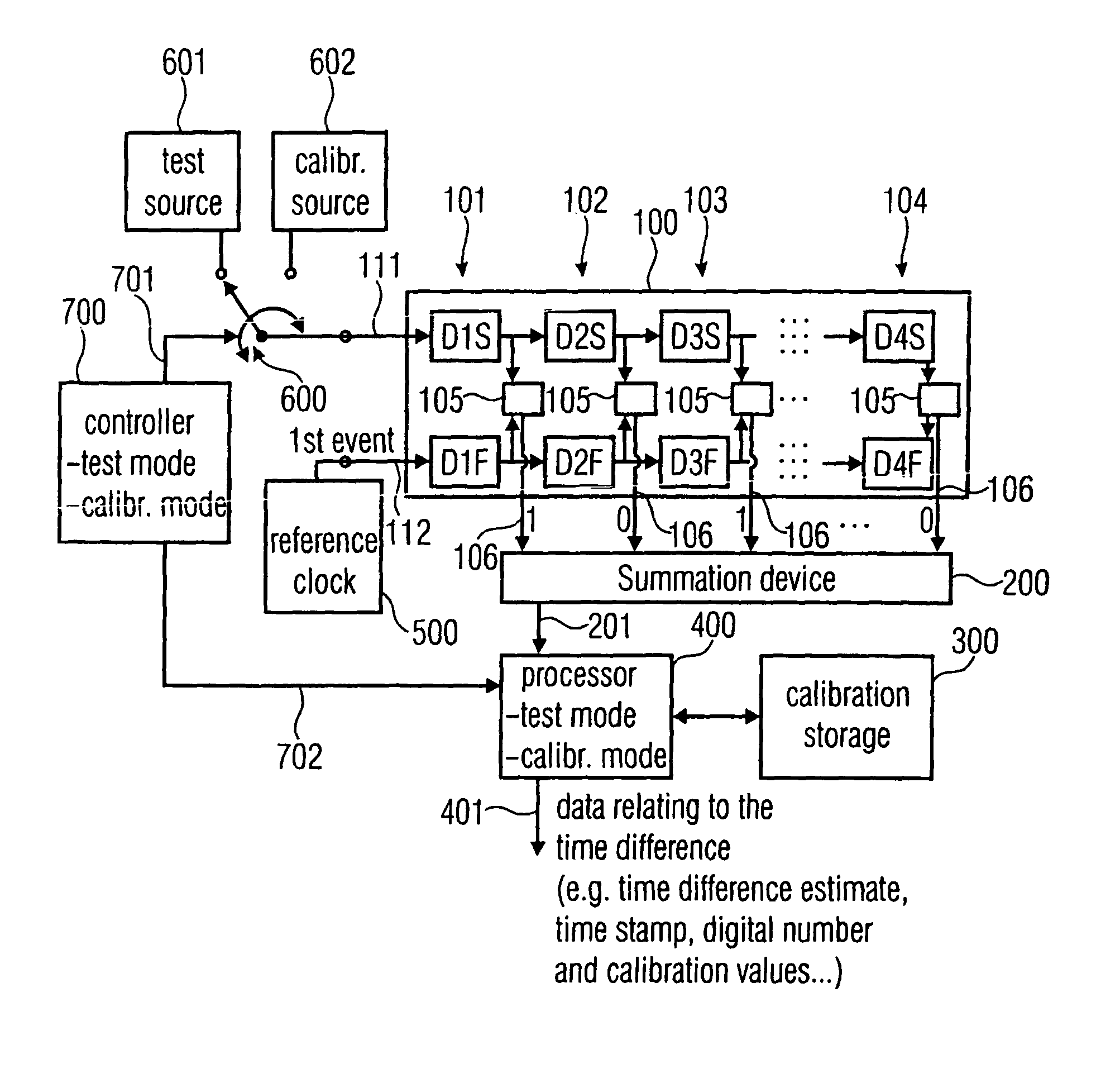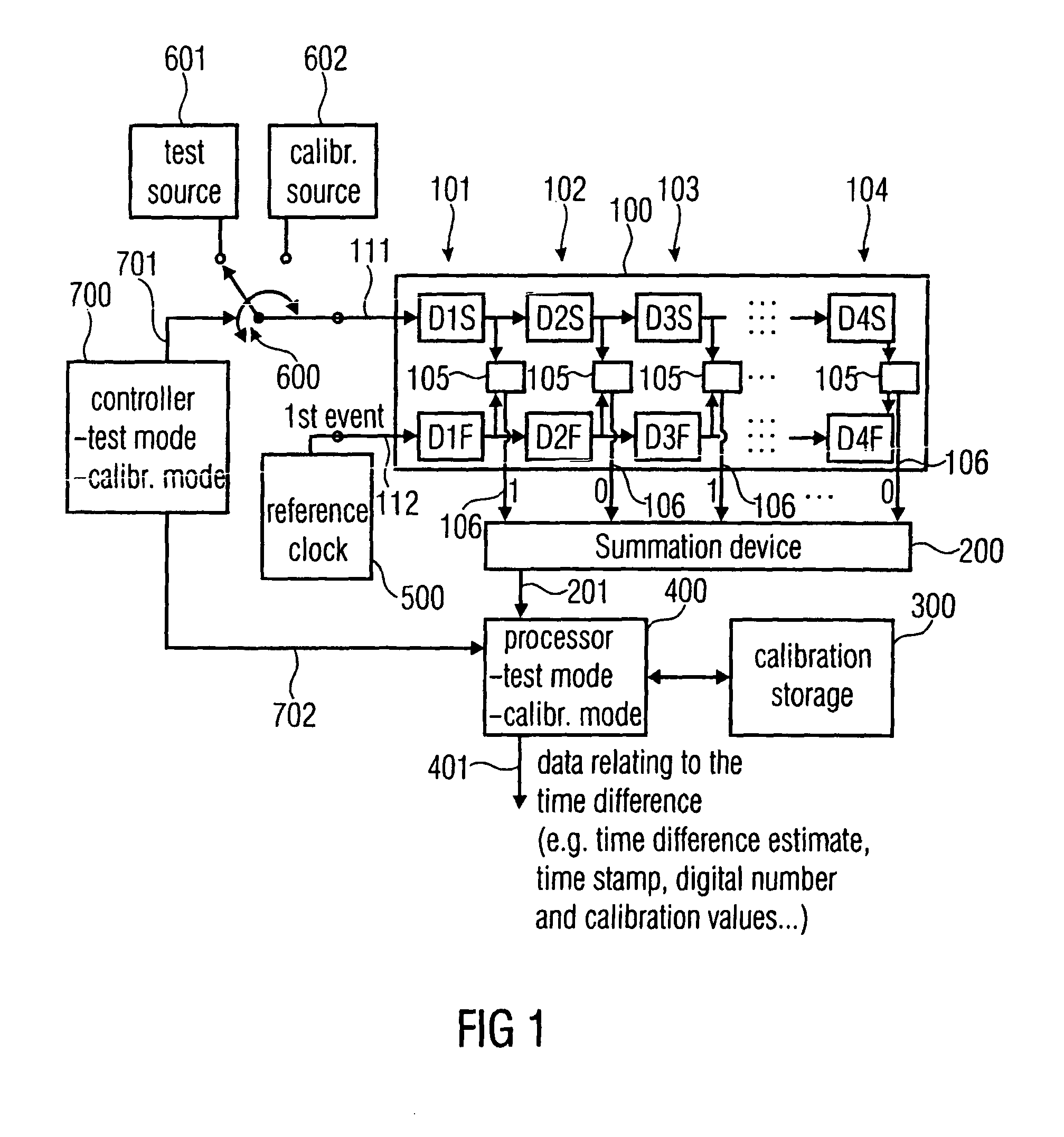Apparatus and method for estimating data relating to a time difference and apparatus and method for calibrating a delay line
a delay line and data estimation technology, applied in the field of signal processing, can solve the problems of uncontrollable device accuracy, non-linearity and even significantly non-monotonic behavior, and inability to fully optimize the measurement accuracy, so as to improve the circuit characteristics, improve the accuracy, and improve the effect of production yield
- Summary
- Abstract
- Description
- Claims
- Application Information
AI Technical Summary
Benefits of technology
Problems solved by technology
Method used
Image
Examples
Embodiment Construction
[0048]FIG. 1 illustrates an apparatus for estimating data relating to a time difference between two events. An exemplary time difference between two events is indicated in FIG. 8 where there is a first input into the time to digital converter or, specifically, into a delay line not illustrated in FIG. 8 and in which a second input into the TDC (Delay Line) is indicated as well. The first input is connected to a test signal having a test signal edge indicated as “event” in FIG. 8. The second event is represented by a rising edge of a clock signal connected to the second input (CLK) of the TDC. The test clock has a period of R and the TDC measures the distance t as indicated in FIG. 8. Thus, the complete time stamp output by the TDC in FIG. 8 is equal to N×R−t. Depending on different applications of the present invention, one input into the TCC need not necessarily be a clock, i.e. the reference clock of the automatic test equipment, but the input can also be another test edge when th...
PUM
 Login to View More
Login to View More Abstract
Description
Claims
Application Information
 Login to View More
Login to View More - R&D
- Intellectual Property
- Life Sciences
- Materials
- Tech Scout
- Unparalleled Data Quality
- Higher Quality Content
- 60% Fewer Hallucinations
Browse by: Latest US Patents, China's latest patents, Technical Efficacy Thesaurus, Application Domain, Technology Topic, Popular Technical Reports.
© 2025 PatSnap. All rights reserved.Legal|Privacy policy|Modern Slavery Act Transparency Statement|Sitemap|About US| Contact US: help@patsnap.com



